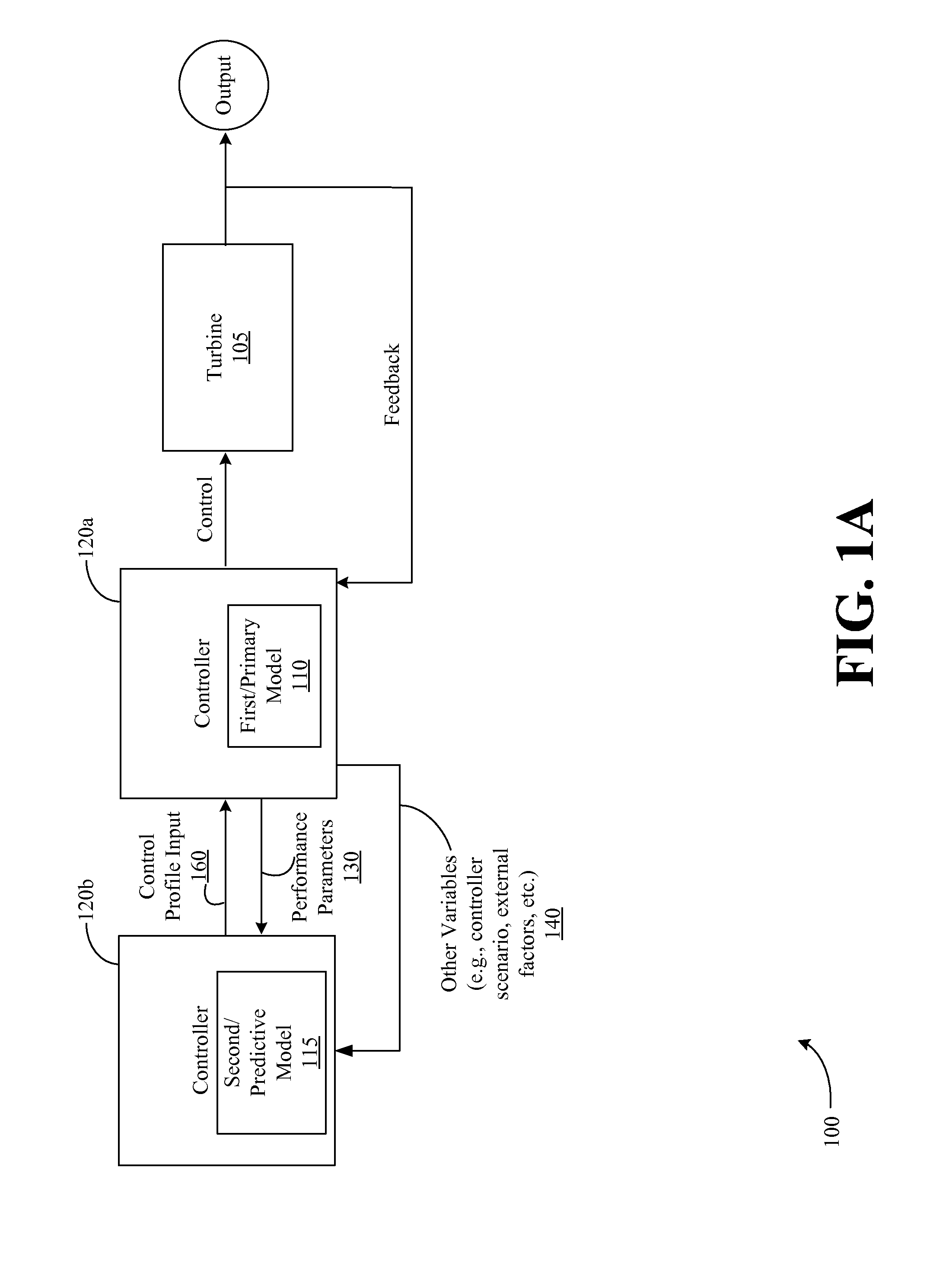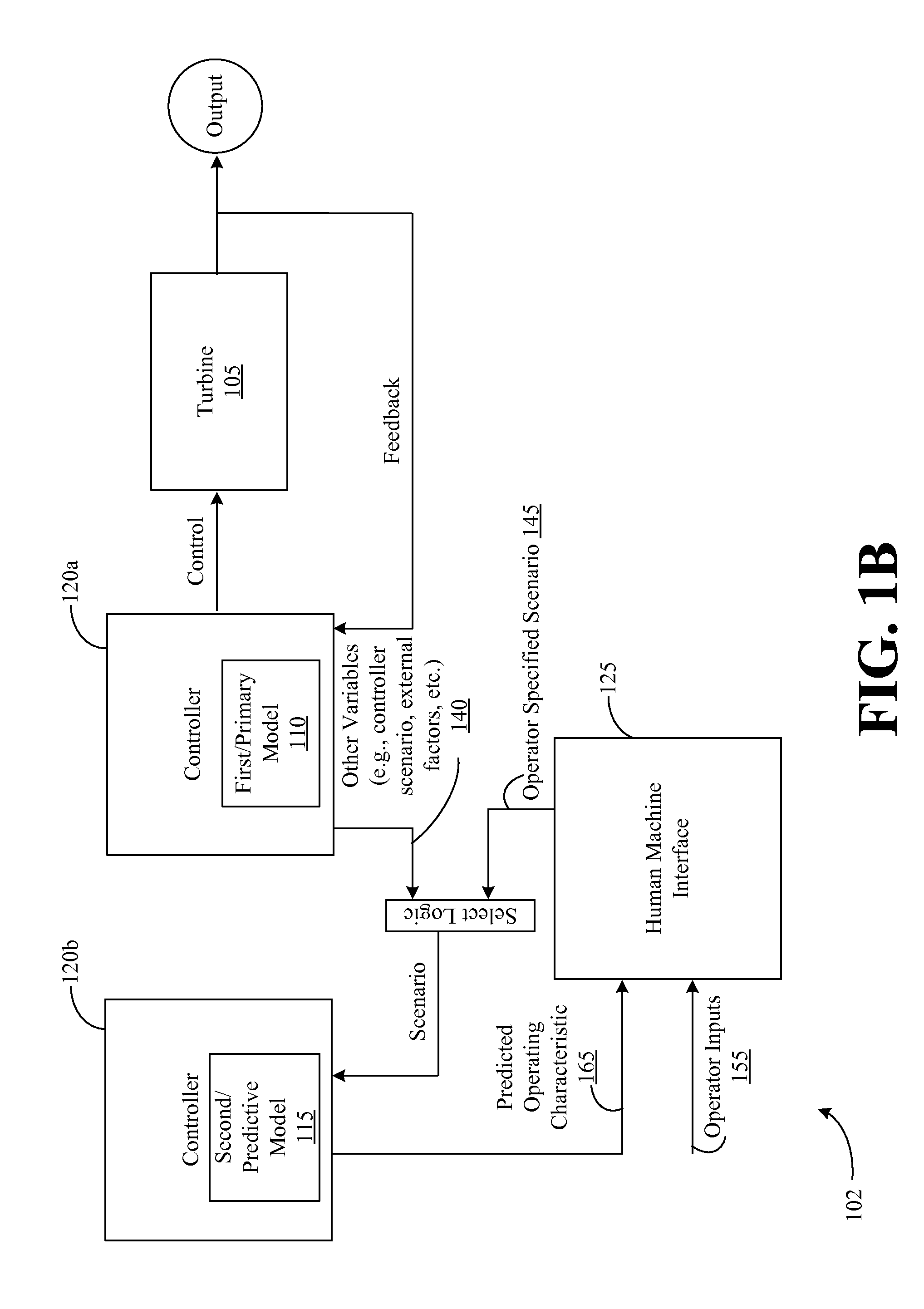Methods and Systems for Modeling Turbine Operation
a turbine and turbine technology, applied in adaptive control, process and machine control, instruments, etc., can solve the problems of increasing the difficulty of predicting and controlling the performance of the turbine at a given operating condition, operating inefficiencies, and increasing the difficulty of predicting and controlling the performance of the turbin
- Summary
- Abstract
- Description
- Claims
- Application Information
AI Technical Summary
Benefits of technology
Problems solved by technology
Method used
Image
Examples
Embodiment Construction
[0015]Example embodiments of the invention now will be described more fully hereinafter with reference to the accompanying drawings, in which some, but not all embodiments are shown. Indeed, the invention may be embodied in many different forms and should not be construed as limited to the embodiments set forth herein; rather, these embodiments are provided so that this disclosure will satisfy applicable legal requirements. Like numbers refer to like elements throughout.
[0016]According to an example embodiment of the invention, a turbine control system may include first and second instances of a model that models turbine operating behavior, such as by utilizing physics-based models or mathematically modeling (e.g., transfer functions, etc.). The first model (also referred to as a “primary model”) may provide current performance parameters of a turbine, which indicate turbine behavior and corresponding operating parameters of the turbine. As used herein, “parameters” refer to items t...
PUM
 Login to View More
Login to View More Abstract
Description
Claims
Application Information
 Login to View More
Login to View More - R&D
- Intellectual Property
- Life Sciences
- Materials
- Tech Scout
- Unparalleled Data Quality
- Higher Quality Content
- 60% Fewer Hallucinations
Browse by: Latest US Patents, China's latest patents, Technical Efficacy Thesaurus, Application Domain, Technology Topic, Popular Technical Reports.
© 2025 PatSnap. All rights reserved.Legal|Privacy policy|Modern Slavery Act Transparency Statement|Sitemap|About US| Contact US: help@patsnap.com



